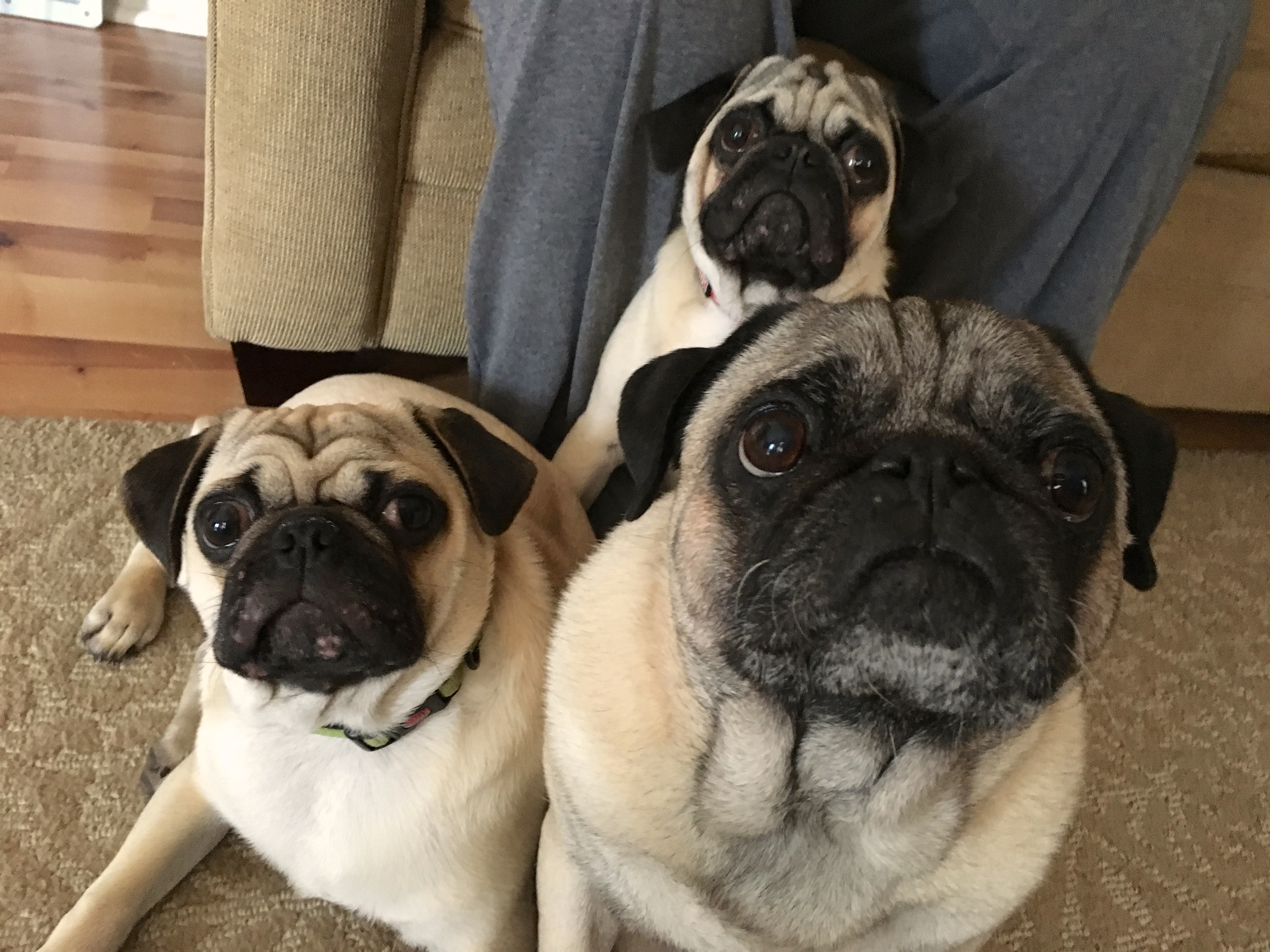A Trio of Pugs Learn to Cop a Chill
By: David Codr
Published Date: March 20, 2016
Rocco (front right) is a nine-year-old Pug who is the “good dog” according to his guardians. Bruiser and Edgar are siblings who joined the house a few months ago. The brothers are much higher energy than Rocco, causing a little nervousness at times. There have also been some possessive issues over food and objects.
It didnt take long to see that overexcited energy was a major problem with this pack of pugs.
For dogs, whoever is in front is literally in the leader position. As you can tell me in the video, each dog tries to get as in-front as they possibly could. When a guardian opens a door this way, they’re essentially assisting the dog – in the dog’s minds.
We worked on a number of things throughout the session to help the dog start to see and identify themselves as being in the follower position.
At the end of the session we re-created the answering the door ritual and had a much better result.
The dogs guardian missed a golden opportunity at the start of that video. If when walking to the door, you can get between a dog or two and the door while far away from the door, I always take advantage and establish the boundary then.
The guardian will need to work on responding immediately, throughout the video, I had to ask her to move forward multiple times before she started to actually move. Timing is everything with dogs so the millisecond that the dog crosses the boundary, she needs to march right at the dog and not stop or slow down until the dog gets behind the boundary.
When I sat down with the guardians at the start of the session, I could instantly tell that these dogs were competing with one another for position, and possession of the guardians. They jumped up on the family’s mother’s lap as if it was their own private couch. They all pawed, nudged and whimpered for her attention for one simple reason; it worked.
Just about every time that a dog asked for attention from the guardian, it got it. When you combine that with a day to day routine involving very little in terms of rules and structure, it’s no wonder these dogs thought that they could act the way they did. In their minds, they clearly thought they were the authority figures, or at the very least as peers to them.
I spent a good portion of the session explaining how the guardian, especially the mother can adopt rules and structure to help the dogs start to see and identify her as being in the leadership position instead of as a peer.
Once the dogs see the humans as being in a superior or leadership position, most of their nuisance behaviors will stop on its own because the dogs no longer will be able to compete for anything; they will understand that the humans have assumed the top spot.
One of the things I try to do is show my clients how they can add structure to every day exercises and activities to help the dogs develop a self-control.
Although there were three kennels, there was no specific kennel for any specific dog. This creates all sorts of issues but also afforded us a great opportunity to add in structure. I recommend that the guardians assign each dog a kennel, and then enforce a no access policy to the other two dogs. This way the dog will look at the kennel as their safe place to go.
I also suggested that the guardians stop letting the dogs out of the kennel unless they were in a completely calm and balanced state. When the guardian shot me a “are you crazy” look, I walked her through an exercise that involves communicating that the dog has to stay inside the kennel despite the door being wide-open.
By the end of the session, the dogs were much calmer and better behaved. Now that their humans were interacting with them as a leader would and no longer rewarding them for unwanted actions and behaviors, the dogs had changed their behavior pretty quickly.
If the guardians are consistent about enforcing the new rules, boundaries and limits over the next few weeks using the new communication methods I taught them, these dogs should adopt this new behavior all the time.
Categorized in: Dog Behavior




